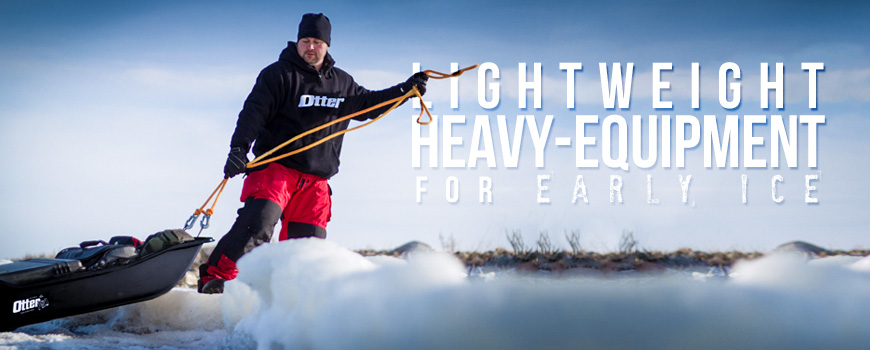Lightweight Heavy-Equipment for Early Ice

Every year, social media goes ablaze with stories and photos from someone who, typically north of the Arctic Circle, is the first to find a glaze of ice that would support their weight for the seconds it took to snap a picture. As that image makes its way southward, people everywhere are tempted to look for ice in places it’s simply not. That said, ice always does seem to eventually come, though it’s surprising how much heavy-equipment people bring out to the lake for attacking first-ice. They show up at landings with ATVs, shelters loaded to the hilt with augers, electronics, and all the tackle they own, along with 20lb cylinders of propane and a car battery to power their LED lights. They’re perpetually disappointed in the fact that in most years, there’s plenty of great walkable ice, long before there’s good hard-water for the armada of ice-machines we all know comes after. Here are some tips on gearing up light for arguably the best part of the ice-season.
SLED

The Medium Otter Sport Sled is an extremely durable, lightweight option for hauling gear early season.
It all starts with a simple device to safely haul some gear, though not all are created equal. While your kid’s snow-sled may be the lightest weight, its low sides are problematic for gear-carry, as often you need to walk through woods, wetlands, or uneven landings that are more likely to dump your gear than keep it on the sled. These same obstacles also offer more wear over time than you’d like to think, especially if you have extended travel over sand, gravel, or pavement. Roto-molded sleds offer the strongest option in exchange for a very small weight sacrifice, such that you’ll own it for the rest of your life. Otter Outdoors Pro Brad Hawthorne still has an Otter sled he purchased more than a decade ago. “In the summer, I use it to move landscaping rock, haul sand, and do whatever chores around the house I’ve got,” says Hawthorne, “but once the mercury dips I’m putting my ice gear in it.”
Shelter


AUGER

No matter how you get onto ice this season, keep it light, keep it smart, and keep it safe!
Tags: Brad Hawthorne, Dave Koonce, Tony Roach